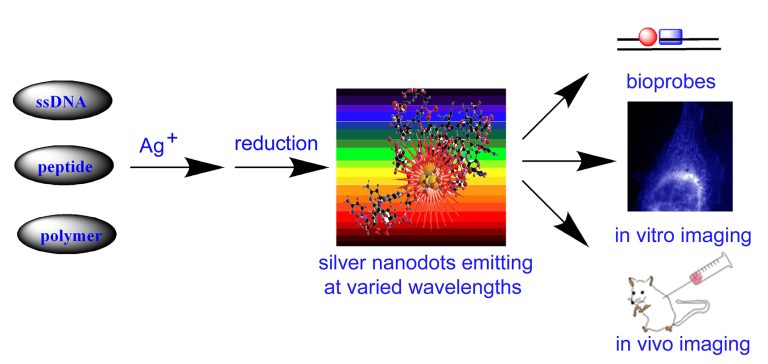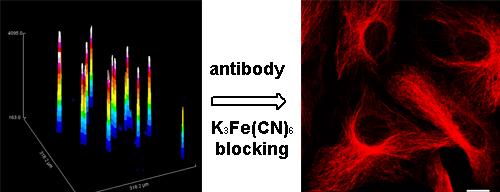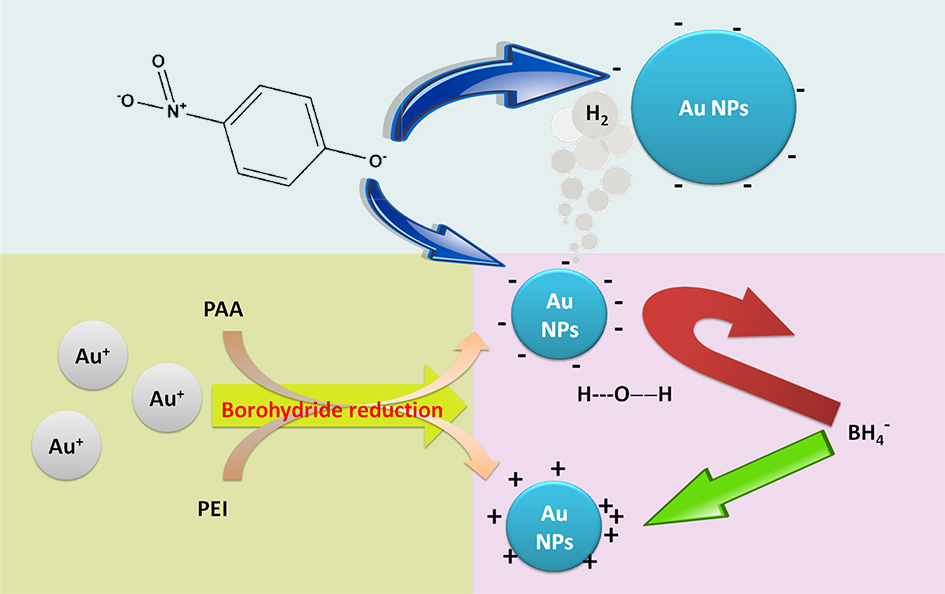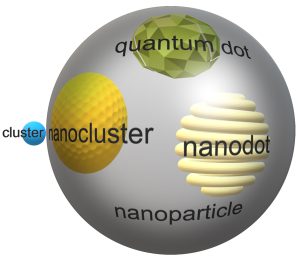Research
Synthesis and application of luminescent silver nanodot
Silver nanodots have been successfully encapsulated in dendrimers, microgels, and peptides, the single stranded DNA (ssDNA), resulting in water-soluble fluorophores. Many applications have been published as probes, photoluminescent materials, electroluminescent materials and biolabels
Cellular imaging and library
Understanding the interactions between silver nanodots and cellular matrices. We have found methods to selectively control the staining of cells with silver nanodots. For example, the 615-emitter silver nanodots showed highly specific staining of nucleoli with an excellent signal-to-background ratio. Binding between silver and sulfhydryl group of proteins appeared to be the major factor that enforced the silver staining. We used potassium hexacyanoferrate(III) to block the active sites in the cells and significantly decreased the non-specific staining of cells. Our results indicated that controlling the coordinate binding between luminescent metal complexes and cell matrices might be an efficient way to improve specific staining. In addition, we utilize the cellular matrix as a library to screen specific proteins for nanodot stabilization.


Understanding the reactions on the metal nanoparticles
Addressing the electrostatic interactions between nanoparticles and substrates. Surface charge of nanoparticles became an important factor that determined the reactivity of the gold-nanoparticle-catalyzed transfer hydrogenation when electrostatic repulsion between nanoparticles and reactants occurred. The higher surface charge density of a smaller nanoparticle led to a stronger repulsion from the nanoparticle surface, resulting in a slower approach of reactants to nanoparticles. One examples is about the induction time during borohydride reduction catalyzed on metal nanoparticle surface. Negatively charged nanoparticles prevented the approach of borohydride anions, leading to the widely reported induction time. However, the aged borohydride showed no induction time when reducing 4-nitrophenol in the presence of metal nanoparticles. Neutral borane intermediates from the spontaneous hydrolysis of borohydride were detected and believed to react with nanoparticles instantly upon contact. Consequently, the parameters determining the spontaneous hydrolysis of borohydride, such as the pH of the solution, affected the induction time.
Peptides stablized gold nanodots and their applications
The low toxicity of gold species has prompted their wide biological applications. Gold clusters are commonly obtained under the stabilization of a monolayer of small molecules, but many of these show only strong absorption and rarely emission. Large proteins, mercapto and DNA molecules have been observed to assist the generation of luminescent gold clusters (gold nanodots). A comprehensive structure of the luminescent gold clusters (gold nanodots) has not yet been fully obtained. In addition, gold nanodots show significantly lower emission quantum yield (<8%) compared to silver nanodots (20%-60%).We are investigating the difference between the silver and the gold nanodots and trying to understand the link between the photophysical properties and their structures.


Educational research: promoting nanoscience in school teaching
Universities and high schools have started to develop courses on nanoscale science. The new properties gained as matter becomes nanoscale are especially useful in illustrating the impact of size. We are also working on promoting nanoscience in school teaching by developing new curricula and teaching materials.

